BMW Air Suspension
-
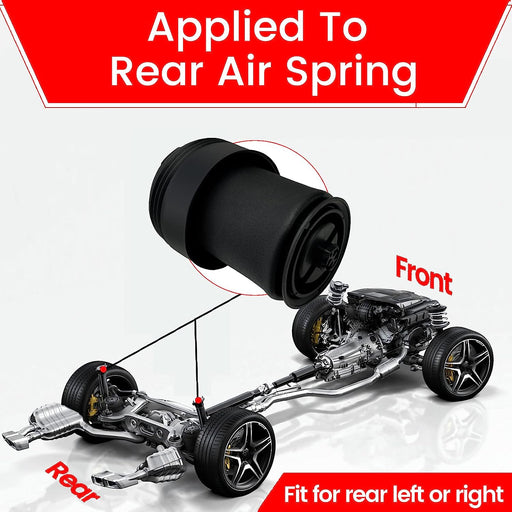
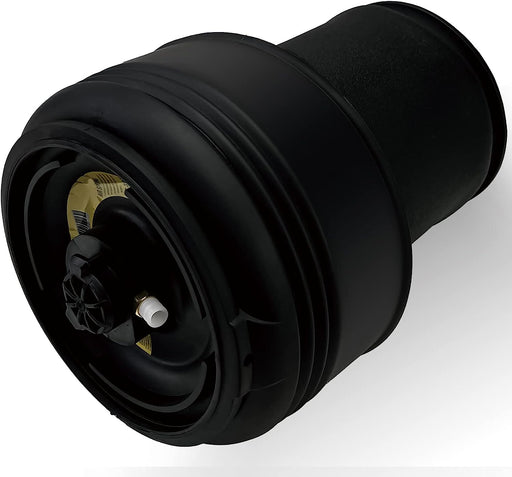 Save 0%
Save %
Save 0%
Save %
VIGOR Rear Air Suspension Spring Bag Compatible with BMW X5 F15 and X6 F16 2013-2021 Car, OEM Number 37126795013, 37126795014
Vigor Air Ride1 reviewOriginal price $0.00 - Original price $0.00Original price $0.00$123.21$123.21 - $123.21Current price $123.21Compatibility: 2013-2020 BMW X5 (F15) 2014-2021 BMW X6 (F16) Original Equipment: 37126795013 37126795014 Vigor Part Number: 1C 3824 year-2...
View full detailsOriginal price $0.00 - Original price $0.00Original price $0.00$123.21$123.21 - $123.21Current price $123.21Save 0% Save % -
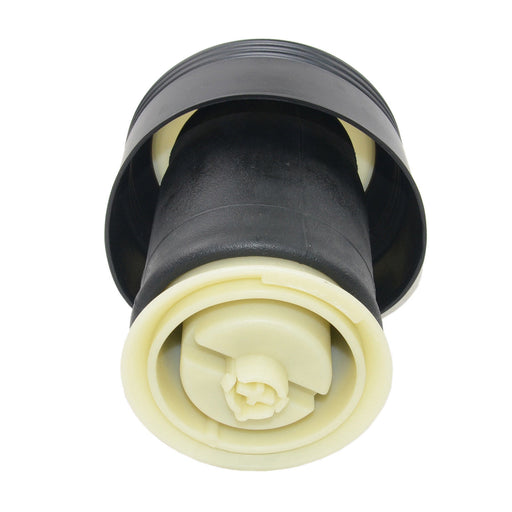
 Save 0%
Save %
Save 0%
Save %
BMW X5 E70 2007-2013, X6 E71 E72 2008-2014 Rear Air Suspension Bag
Vigor Air Ride6 reviewsOriginal price $0.00 - Original price $0.00Original price $0.00$65.49$65.49 - $65.49Current price $65.49Compatibility: 2006-2013 BMW X5 (E70) 2007-2014 BMW X6 (E71/72) (Sport / STANDARD Suspension). Original Equipment: 37126790078, 37126790079, 371...
View full detailsOriginal price $0.00 - Original price $0.00Original price $0.00$65.49$65.49 - $65.49Current price $65.49Save 0% Save % -
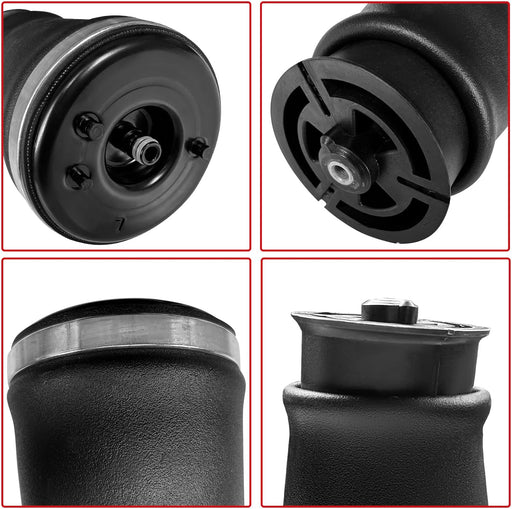
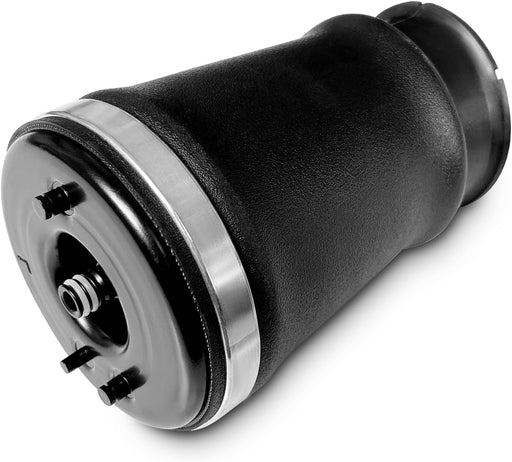 Save 0%
Save %
Save 0%
Save %
VIGOR Rear Air Spring Bag 1997-2003 BMW 540i 530i 528i 525i E39 37121095081, 17610098-101
Vigor Air RideNo reviewsOriginal price $0.00 - Original price $0.00Original price $0.00$65.49$65.49 - $65.49Current price $65.49Compatibility: 2001-2003 BMW 525i E39 1997-2000 BMW 528i E39 2001-2003 BMW 530i E39 1997-2003 BMW 540i E39 Original Equipment: 37121095081, 17...
View full detailsOriginal price $0.00 - Original price $0.00Original price $0.00$65.49$65.49 - $65.49Current price $65.49Save 0% Save % -
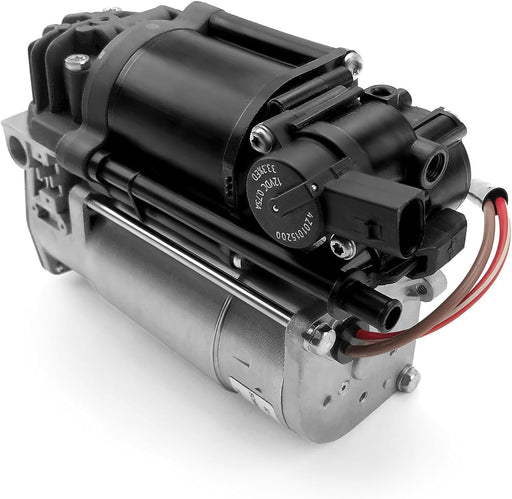
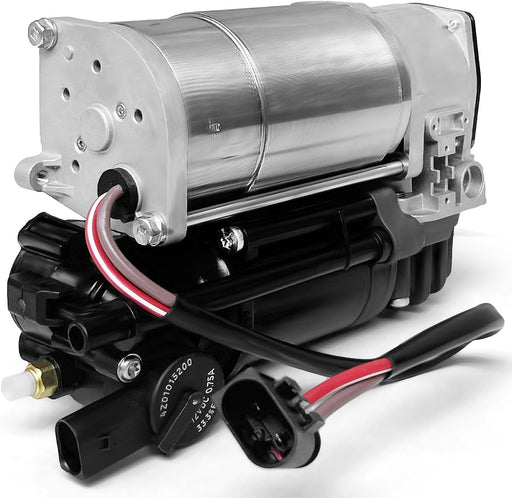 Save 0%
Save %
Save 0%
Save %
VIGOR Air Ride Suspension Compressor Pump Compatible with 2010-2016 Benz E-Class W212 and CLS-Class W218 Car, OEM Number A2123200104, 2123200404
Vigor Air RideNo reviewsOriginal price $0.00 - Original price $0.00Original price $0.00$209.79$209.79 - $209.79Current price $209.79Compatibility: 2010-2016 Benz E-Class W212 2012-2016 Benz E200 2011-2016 Benz E250 2010-2016 Benz E300 2010-2016 Benz E350 2013-2016 Benz E400 201...
View full detailsOriginal price $0.00 - Original price $0.00Original price $0.00$209.79$209.79 - $209.79Current price $209.79Save 0% Save % -
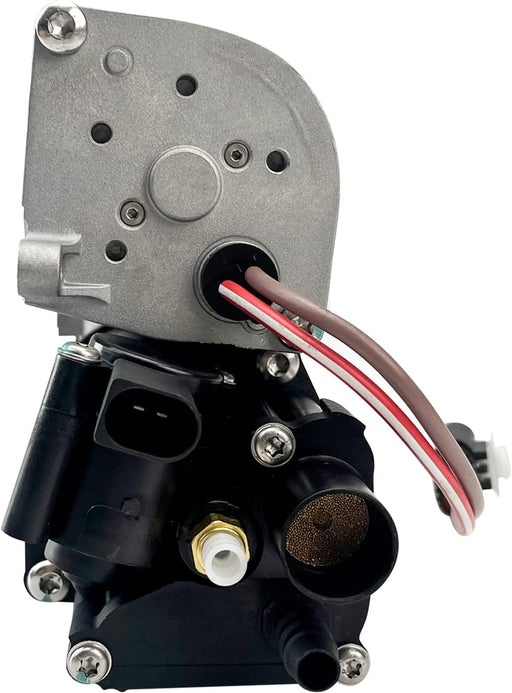
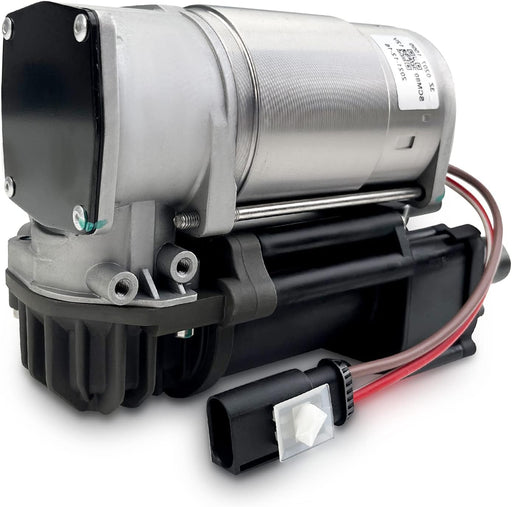 Save 39%
Save %
Save 39%
Save %
VIGOR Air Ride Suspension Compressor Pump Compatible with BMW 2012-2019 BMW X5 F15 F85 X6 F16 F86 SUV Car OEM Number 37206850555, 37206875177, 37206868998
Vigor Air RideNo reviewsOriginal price $540.00Original price $540.00 - Original price $540.00Original price $540.00Current price $331.89$331.89 - $331.89Current price $331.89Compatibility: 2012-2018 BMW X5 F15 2013-2018 BMW X5 M F85 2013-2019 BMW X6 F16 2013-2019 BMW X6 M F86 Original Equipment: 37206875177, 3720686...
View full detailsOriginal price $540.00Original price $540.00 - Original price $540.00Original price $540.00Current price $331.89$331.89 - $331.89Current price $331.89Save 39% Save % -
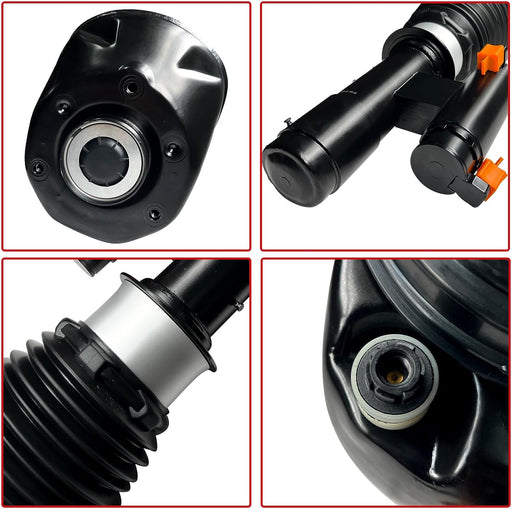
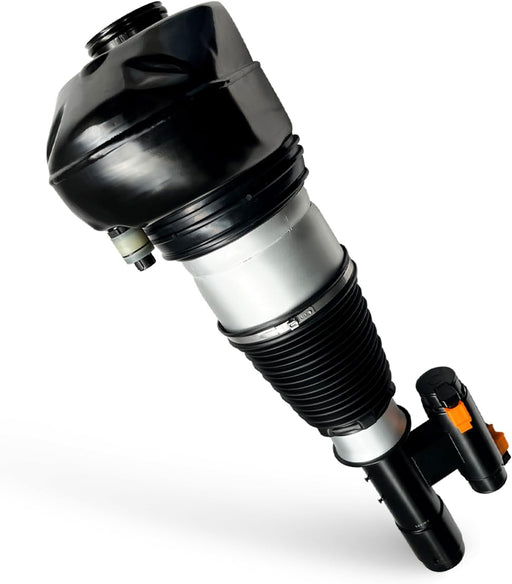 Save 18%
Save %
Save 18%
Save %
VIGOR Front Air Shock Absorber BMW with EDC Compatible with 2015-2022 BMW 7-Series xDrive G11 G12 740 745 750 4WD Car Air Strut OEM Replace Number 37106877559, 37106899043
Vigor Air Ride3 reviewsOriginal price $540.00Original price $540.00 - Original price $540.00Original price $540.00Current price $442.89$442.89 - $442.89Current price $442.89Compatibility: 2015-2022 BMW 740i 745i 750i M760i xDrive G11 G12 4WD 2015-2022 BMW 740Li 750Li 760Li xDrive G11 G12 4WD 2015-2022 BMW 740Le 750Le...
View full detailsOriginal price $540.00Original price $540.00 - Original price $540.00Original price $540.00Current price $442.89$442.89 - $442.89Current price $442.89Save 18% Save % -
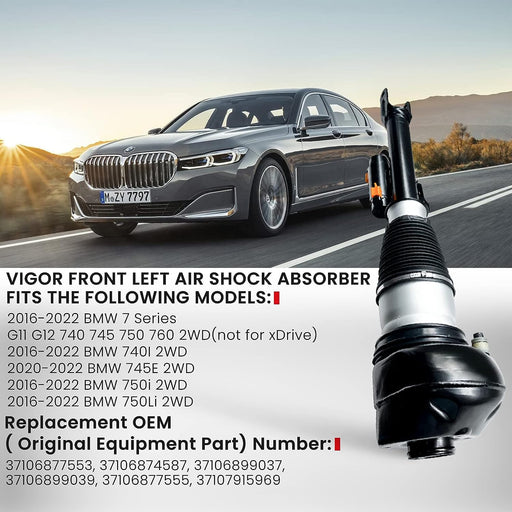
 Save 0%
Save %
Save 0%
Save %
VIGOR Front Air Shock Absorber with EDC Compatible with 2016-2022 BMW 7-Series G11 G12 740 745 750 760 2WD Car Air Strut OEM Replace Number 37106877553, 37106874587
Vigor Air RideNo reviewsOriginal price $0.00 - Original price $0.00Original price $0.00$460.65$460.65 - $460.65Current price $460.65Compatibility: 2016-2022 BMW 7-Series G11 G12 740 745 750 760 2WD(not for xDrive) 2016-2022 BMW 740I 2WD 2020-2022 BMW 745E 2WD 2016-2022 BMW 750i...
View full detailsOriginal price $0.00 - Original price $0.00Original price $0.00$460.65$460.65 - $460.65Current price $460.65Save 0% Save % -
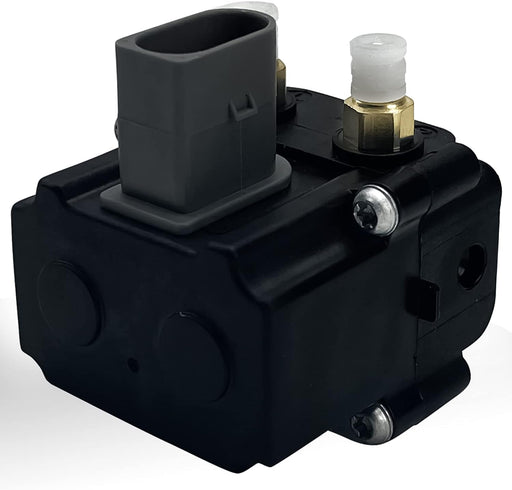
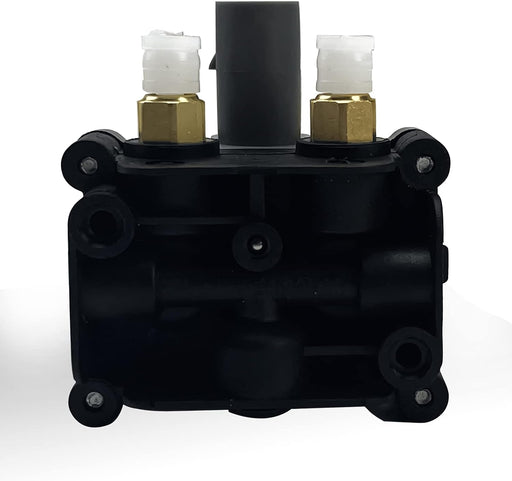 Save 71%
Save %
Save 71%
Save %
VIGOR Air Suspension Compressor Valve Block Compatible with 2009-2017 BMW 535i/535i GT/550i/550i GT/740i/740LD/740Li/750i/750Li/760Li Car, OEM Number 37206875176, 37206789450
Vigor Air Ride2 reviewsOriginal price $150.00Original price $150.00 - Original price $150.00Original price $150.00Current price $43.29$43.29 - $43.29Current price $43.29Compatibility: 2014-2016 BMW 535i 2010-2017 BMW 535i GT 2014-2016 BMW 550i 2010-2017 BMW 550i GT 2010-2015 BMW 740i 2015 BMW 740LD 2011-2015 BMW 7...
View full detailsOriginal price $150.00Original price $150.00 - Original price $150.00Original price $150.00Current price $43.29$43.29 - $43.29Current price $43.29Save 71% Save % -
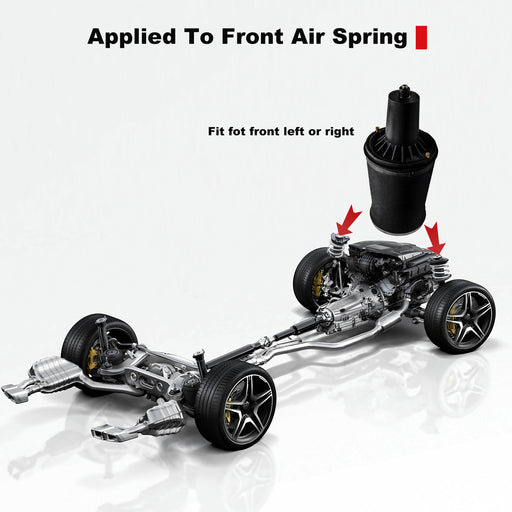
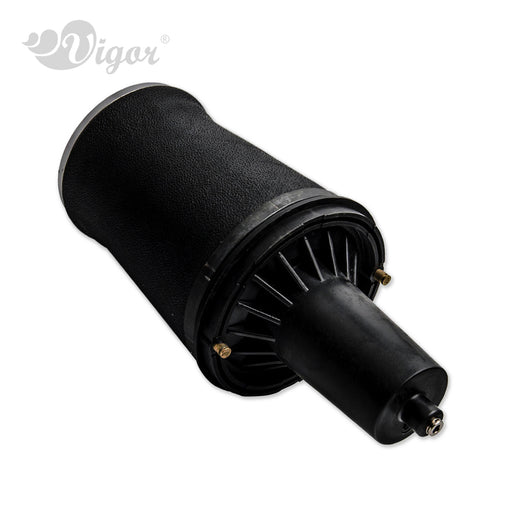 Save 0%
Save %
Save 0%
Save %
VIGOR Front Air Suspension Spring Bag Compatible with 1995-2002 Land Rover Generation II P38A Car Air Struts, OEM Replace Part Number REB101740, REB101740E
Vigor Air RideNo reviewsOriginal price $0.00 - Original price $0.00Original price $0.00$87.69$87.69 - $87.69Current price $87.69Compatibility: 1995-2002 Land Rover Generation II P38A OEM Number for Replacement REB101740 REB101740E Vigor Part Number: 1C 2021 Model u...
View full detailsOriginal price $0.00 - Original price $0.00Original price $0.00$87.69$87.69 - $87.69Current price $87.69Save 0% Save % -
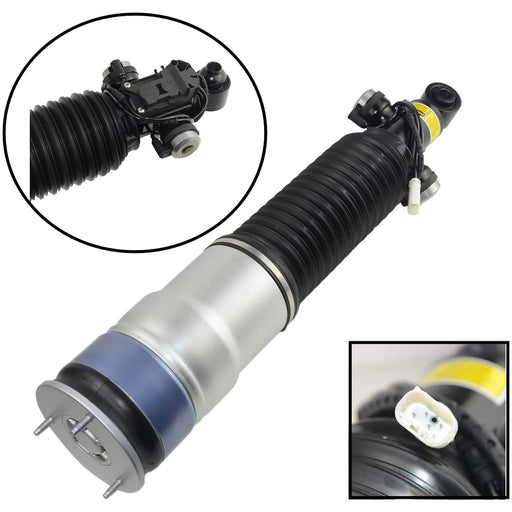
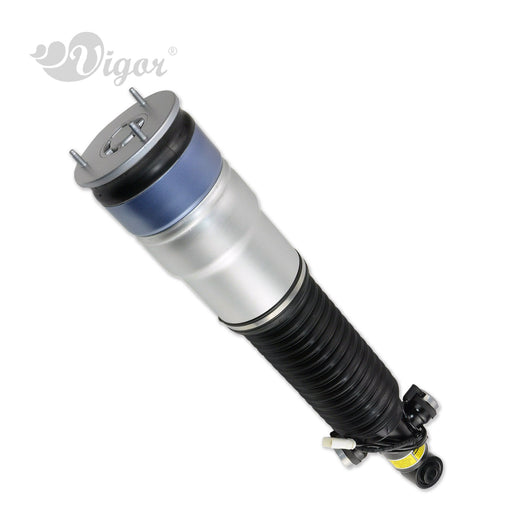 Save 0%
Save %
Save 0%
Save %
VIGOR Rear Left Air Strut Absorber with EDC Compatible with 2008-2015 BMW 7 Series F01/F02/F03/F04 Car Air Suspension Shock, OEM Replace Part Number 37126791675, 37126794139
Vigor Air RideNo reviewsOriginal price $0.00 - Original price $0.00Original price $0.00$598.29$598.29 - $598.29Current price $598.29Compatibility: 2008-2015 BMW 7 (F01, F02, F03, F04) OEM Number for Replacement 37126791675 37126794139 37126796929 Vigor Part Number: 2S 600...
View full detailsOriginal price $0.00 - Original price $0.00Original price $0.00$598.29$598.29 - $598.29Current price $598.29Save 0% Save % -
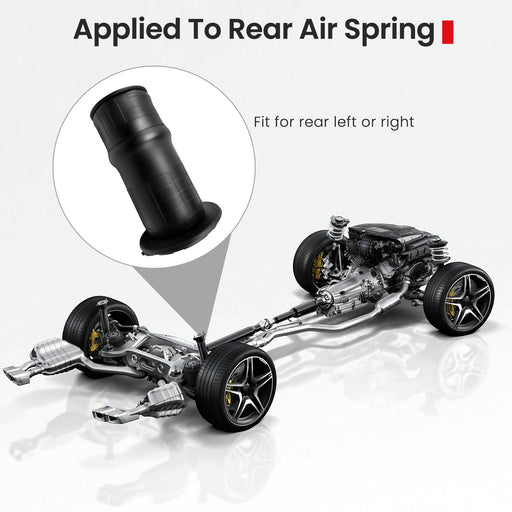
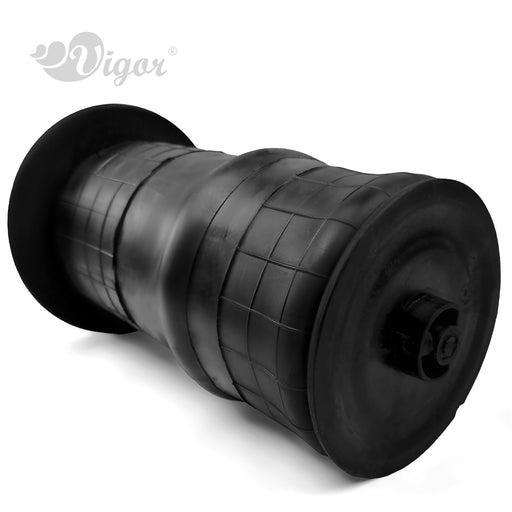 Save 0%
Save %
Save 0%
Save %
Rear Air Suspension Spring Bag Compatible with 1994-2002 Land Rover Range Rover 2 (P38) Car Air Struts RKB101460P, ANR4685, RKB101460
Vigor Air RideNo reviewsOriginal price $0.00 - Original price $0.00Original price $0.00$179.82$179.82 - $179.82Current price $179.82Compatibility: 1994-2002 Land Rover Range Rover 2 (P38) OEM Number for Replacement RKB101460P ANR4685 RKB101460 Vigor Part number: 1C 2025 1C...
View full detailsOriginal price $0.00 - Original price $0.00Original price $0.00$179.82$179.82 - $179.82Current price $179.82Save 0% Save % -
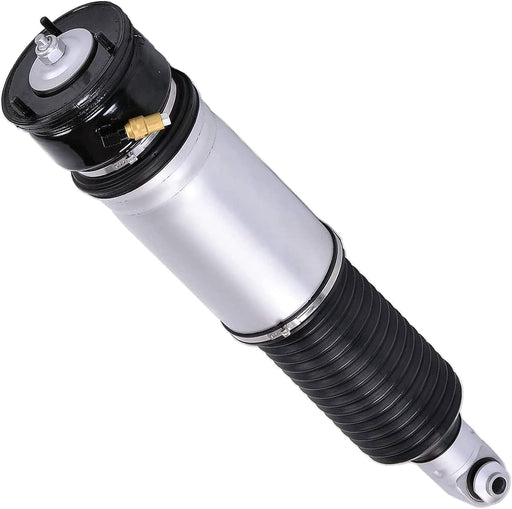
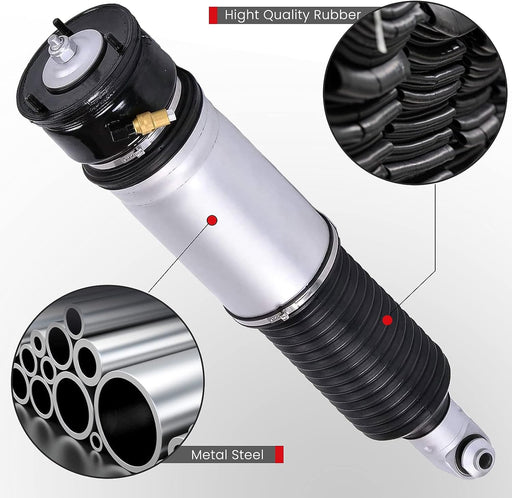 Save 0%
Save %
Save 0%
Save %
VIGOR Rear Left or Right Air Shocks Absorber without EDC Compatible with 2002-2008 BMW 7 Series E65/E66 745I, 745LI, 760I, 760LI Car Air Suspension, OEM Number 37126785537
Vigor Air RideNo reviewsOriginal price $0.00 - Original price $0.00Original price $0.00$320.79$320.79 - $320.79Current price $320.79Compatibility Listuff1a 2002-2005 BMW 745I 2002-2005 BMW 745LI 2004-2006 BMW 760I 2003-2008 BMW 760LI OEM Number For Replacement: 3712678553...
View full detailsOriginal price $0.00 - Original price $0.00Original price $0.00$320.79$320.79 - $320.79Current price $320.79Save 0% Save % -
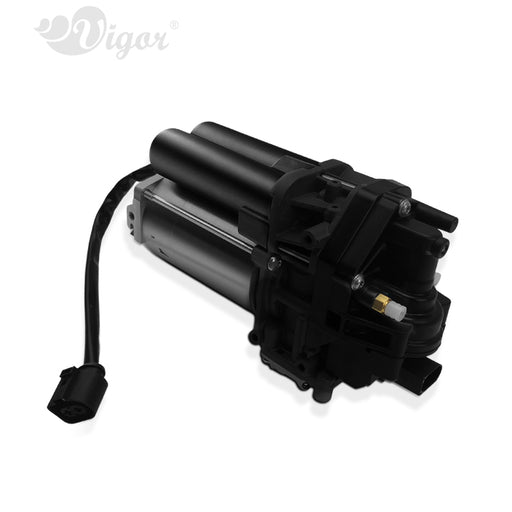
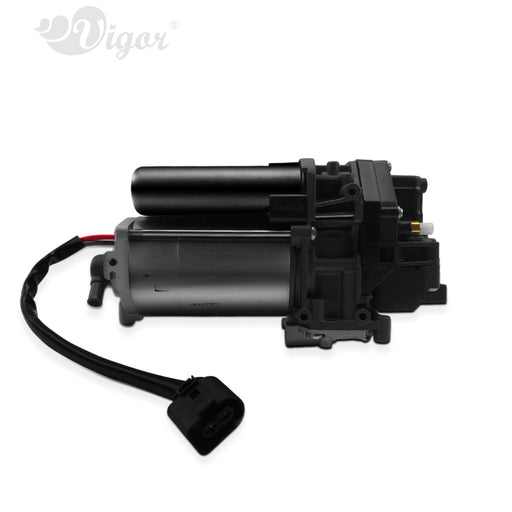 Save 0%
Save %
Save 0%
Save %
Air Ride Suspension Compressor Pump Compatible with Audi Q7/Q8/RS Q8/SQ7/SQ8, Bentley Bentayga and Lamborghini Urus Car, OEM Number 4M0616005G, 4M0616005H
Vigor Air RideNo reviewsOriginal price $0.00 - Original price $0.00Original price $0.00$258.63$258.63 - $258.63Current price $258.63Compatibility: 2016-2021 Audi Q7 2019-2021 Audi Q8 2020-2022 Audi RS Q8 2020-2021 Audi SQ7 2020-2021 Audi SQ8 2017-2021 Bentley Bentayga 2018-2021...
View full detailsOriginal price $0.00 - Original price $0.00Original price $0.00$258.63$258.63 - $258.63Current price $258.63Save 0% Save % -
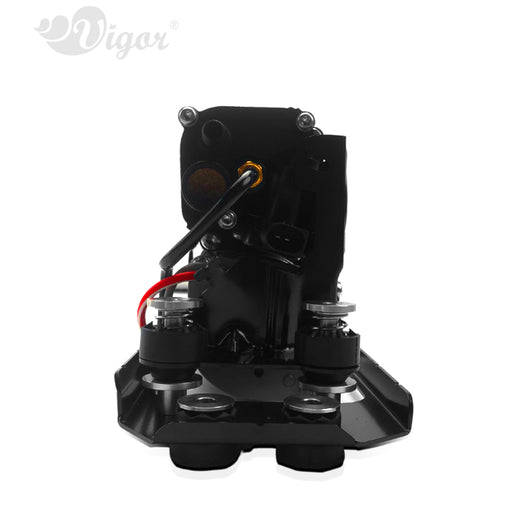
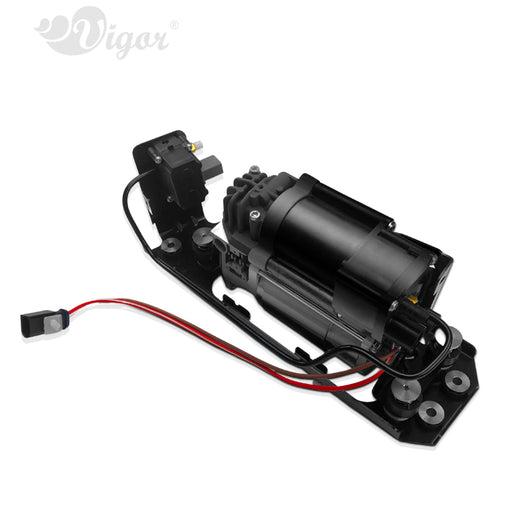 Save 0%
Save %
Save 0%
Save %
Vigor Air Suspension Compressor Pump Compatible with BMW 5 Series GT F07 F11 F11N and 7 Series F01 F02 F04 Car, OEM Number 37206789450, 37206864215, 37206794465
Vigor Air RideNo reviewsOriginal price $0.00 - Original price $0.00Original price $0.00$260.85$260.85 - $260.85Current price $260.85Compatibility: 2010-2014 BMW 5 Series (F11 / F11N) 2010-2014 BMW 5 Series GT (F07) 2008-2012 BMW 7 Series (F01 / F02 / F04) Original Equipment: ...
View full detailsOriginal price $0.00 - Original price $0.00Original price $0.00$260.85$260.85 - $260.85Current price $260.85Save 0% Save % -
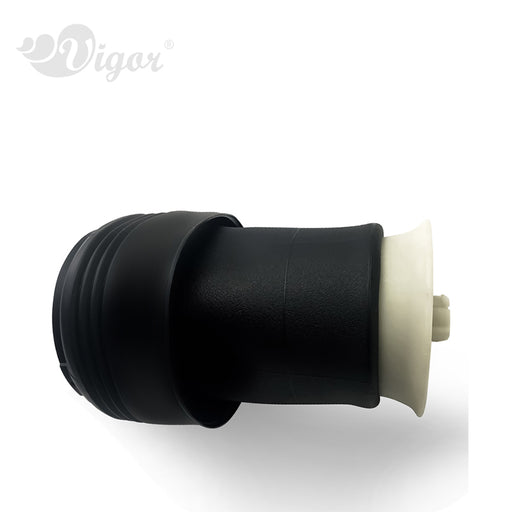
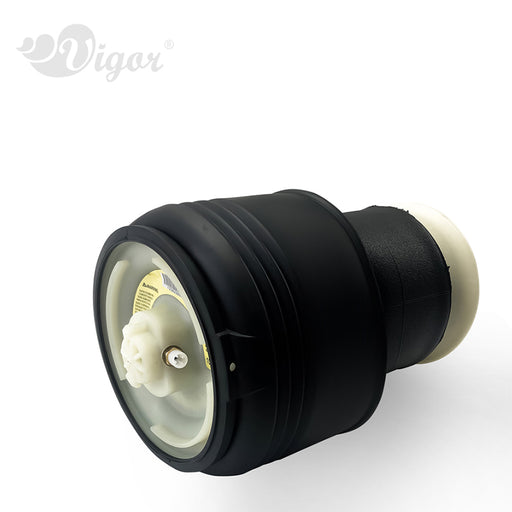 Save 0%
Save %
Save 0%
Save %
VIGOR Rear Air Suspension Spring Bag Compatible with BMW X5 E70 and X6 E71/E72 Hybrid Car, OEM Number 37126790078, 37126790080
Vigor Air RideNo reviewsOriginal price $0.00 - Original price $0.00Original price $0.00$72.15$72.15 - $72.15Current price $72.15Compatibility: 2006-2013 BMW X5 (E70) 2008-2014 BMW X6 (E71) 2009-2010 BMW X6 (E72 Hybrid) OEM Number For Replacement: 37126790078, 371267900...
View full detailsOriginal price $0.00 - Original price $0.00Original price $0.00$72.15$72.15 - $72.15Current price $72.15Save 0% Save % -
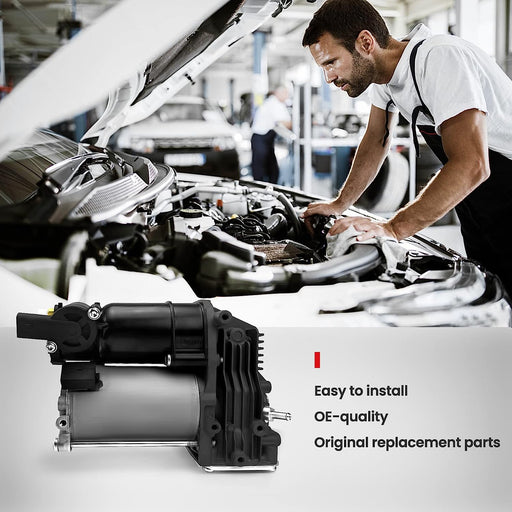
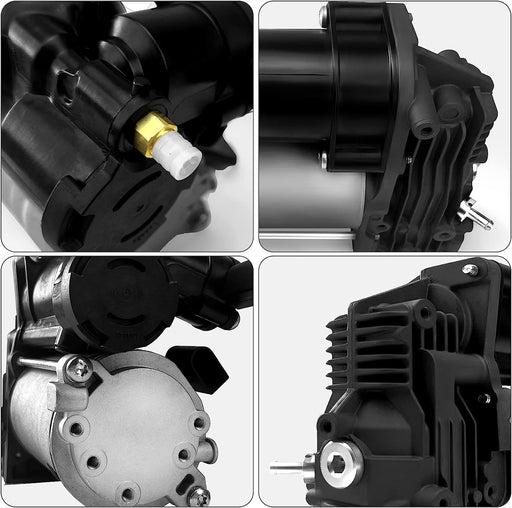 Save 0%
Save %
Save 0%
Save %
Air Suspension Compressor PumpBMW X5 E70 X6 E71 OEM 37206859714 37206799419
Vigor Air Ride1 reviewOriginal price $0.00 - Original price $0.00Original price $0.00$243.09$243.09 - $243.09Current price $243.09Compatibility: 2006-2013 BMW X5 (E70) 2007-2014 BMW X6 (E71) 2008-2012 BMW X6 (E72 Hybrid) Original Equipment: 37206859714 37206799419 372067899...
View full detailsOriginal price $0.00 - Original price $0.00Original price $0.00$243.09$243.09 - $243.09Current price $243.09Save 0% Save % -
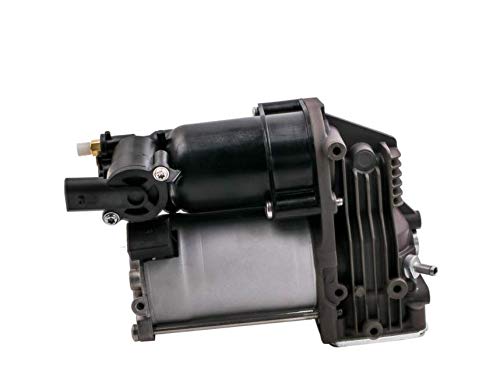
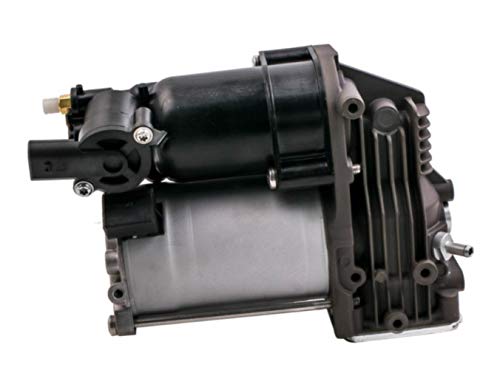 Save 0%
Save %
Save 0%
Save %
BMW E61 5 series 535i Air Suspension Compressor Pump
Vigor Air RideOriginal price $0.00 - Original price $0.00Original price $0.00$194.25$194.25 - $194.25Current price $194.25Compatibility: 2003-2010 BMW 5 Series ESTATE (E61) Original Equipment:37106793778, 37206792855. Vigor Part Number: 2Z 0206 year-2010,year-2010-...
View full detailsOriginal price $0.00 - Original price $0.00Original price $0.00$194.25$194.25 - $194.25Current price $194.25Save 0% Save % -
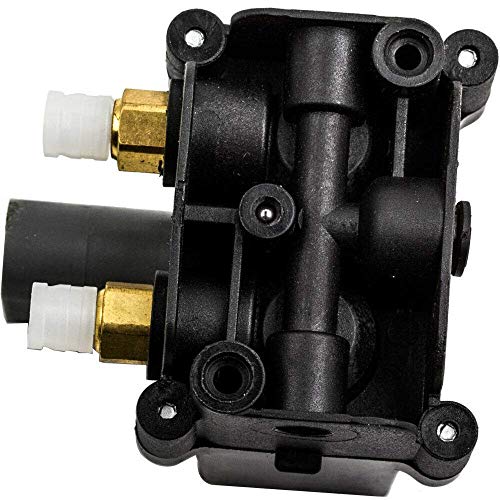
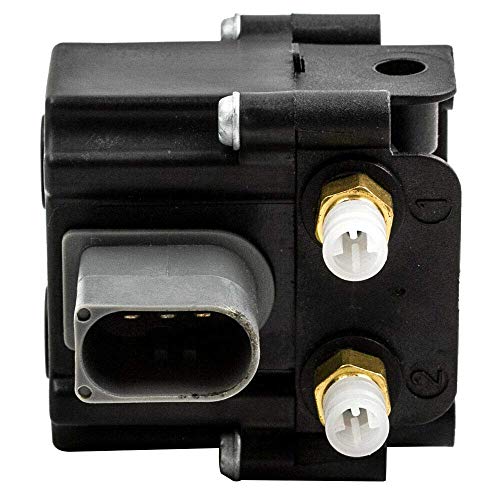 Save 0%
Save %
Save 0%
Save %
BMW F07 F01 F02 F11 X5 F15 X6 F16 Air Suspension Compressor Pump Valve Block
Vigor Air RideOriginal price $0.00 - Original price $0.00Original price $0.00$108.54$108.54 - $108.54Current price $108.54Compatibility: 2014-2018 BMW X5 2014-2018 BMW F15 2014-2018 BMW F85 2014-2018 BMW X6 2014-2018 BMW F16 2014-2018 BMW F86 Original Equipmen...
View full detailsOriginal price $0.00 - Original price $0.00Original price $0.00$108.54$108.54 - $108.54Current price $108.54Save 0% Save % -
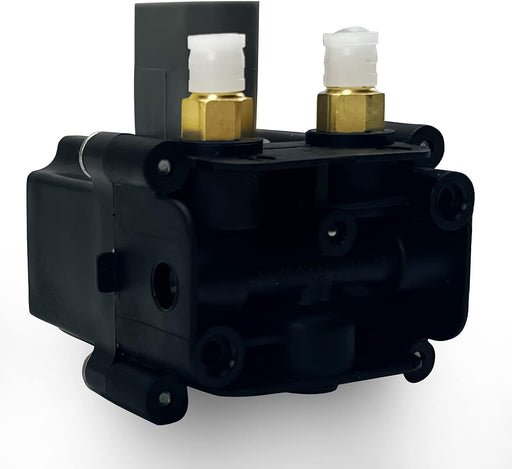
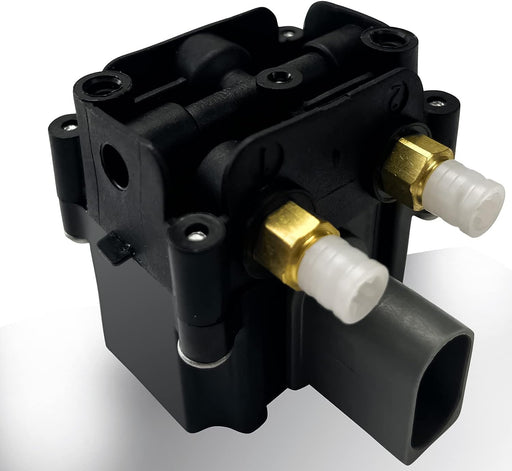 Save 0%
Save %
Save 0%
Save %
Vigor Air Suspension Valve Block Compatible with BMW X5 E70, X6 E71/E72 and 5 Series E61 Touring Wagon Car Compressor, OEM Number 37206789937, 37206799419
Vigor Air RideOriginal price $0.00 - Original price $0.00Original price $0.00$42.17$42.17 - $42.17Current price $42.17Compatibility: 2007-2013 BMW X5 (E70) 2008-2015 BMW X6 (E71/E72) 2004-2010 BMW 5-Series (E61) Touring Wagon Original Equipment: 37206789937...
View full detailsOriginal price $0.00 - Original price $0.00Original price $0.00$42.17$42.17 - $42.17Current price $42.17Save 0% Save % -
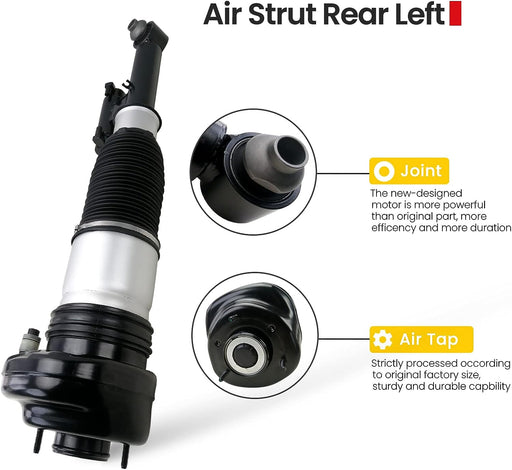
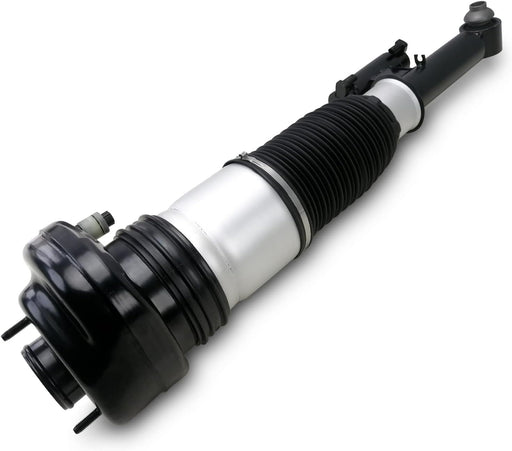 Save 0%
Save %
Save 0%
Save %
VIGOR Rear Air Shocks Absorber with BMW EDC Compatible with 2015-2022 BMW 7 Series G11 G12 740 750 760 xDrive 2WD Car Air Strut OEM Replace Number 37106874593, 37107915953
Vigor Air RideOriginal price $0.00 - Original price $0.00Original price $0.00$455.10$455.10 - $455.10Current price $455.10Compatibility: 2015-2022 BMW 7 Series G11 G12 740 750 760 2WD 2015-2022 BMW 7 Series G11 G12 740 750 760 xDrive Original Equipment: Left: 3710...
View full detailsOriginal price $0.00 - Original price $0.00Original price $0.00$455.10$455.10 - $455.10Current price $455.10Save 0% Save % -
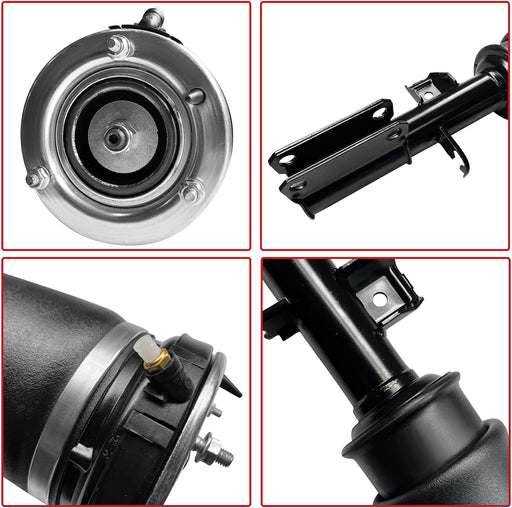
 Save 0%
Save %
Save 0%
Save %
VIGOR Front Air Shocks Absorber 1998-2007 BMW X5 E53 37116757501, 37116761443
Vigor Air RideOriginal price $0.00 - Original price $0.00Original price $0.00$265.29$265.29 - $265.29Current price $265.29Compatibility: 1998-2007 BMW X5 E53 (with 4 Corner Air Leveling Suspension) Original Equipment: Left: 37116757501, 37116761443 Right: 37...
View full detailsOriginal price $0.00 - Original price $0.00Original price $0.00$265.29$265.29 - $265.29Current price $265.29Save 0% Save % -
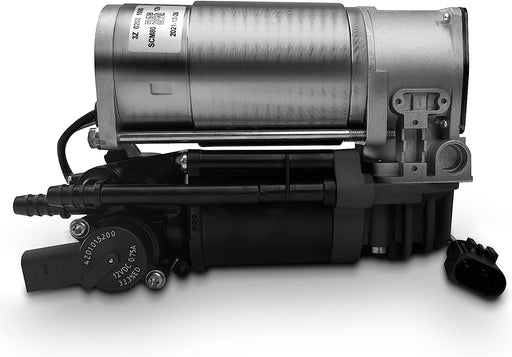
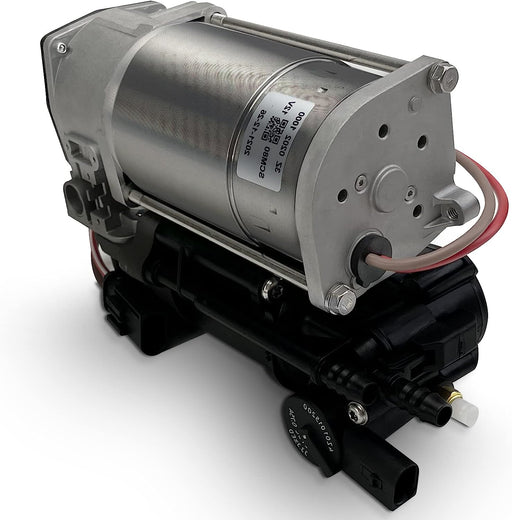 Save 0%
Save %
Save 0%
Save %
Vigor Air Suspension Compressor Pump Compatible with BMW 535d, 535i, 550i, 740i, 740ld, 740li, 750i, 750li, 760li Car, OEM Number 37206789450, 37206864215, 37206789165
Vigor Air RideOriginal price $0.00 - Original price $0.00Original price $0.00$357.42$357.42 - $357.42Current price $357.42Compatibility: 2014-2016 BMW 535D 2010-2016 BMW 535I 2010-2017 BMW 535I GT 2010-2016 BMW 550I 2010-2017 BMW 550I GT 2011-2015 BMW 740I 2015 BMW 7...
View full detailsOriginal price $0.00 - Original price $0.00Original price $0.00$357.42$357.42 - $357.42Current price $357.42Save 0% Save % -
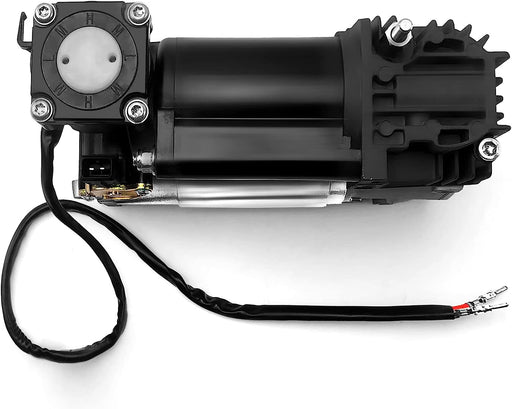
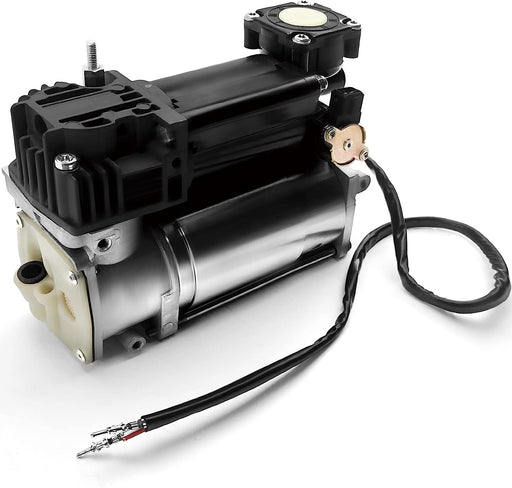 Save 0%
Save %
Save 0%
Save %
Vigor Air Suspension Compressor Pump Compatible with BMW X5 E53 2000-2006 Car with 4 Corner Air Leveling, OEM Number 37226787617, 37226753862
Vigor Air RideOriginal price $0.00 - Original price $0.00Original price $0.00$234.21$234.21 - $234.21Current price $234.21Compatibility: 2000 BMW X5 (E53) with 4 Corner Air Leveling 2001 BMW X5 (E53) with 4 Corner Air Leveling 2002 BMW X5 (E53) with 4 Corner Air L...
View full detailsOriginal price $0.00 - Original price $0.00Original price $0.00$234.21$234.21 - $234.21Current price $234.21Save 0% Save % -
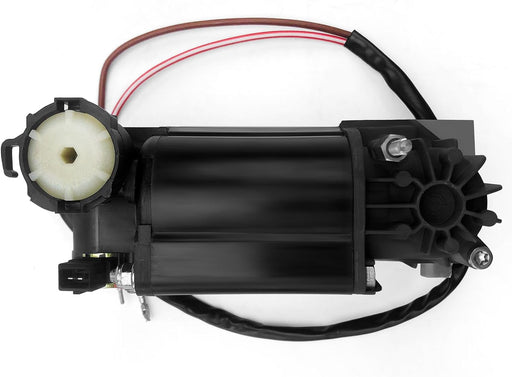
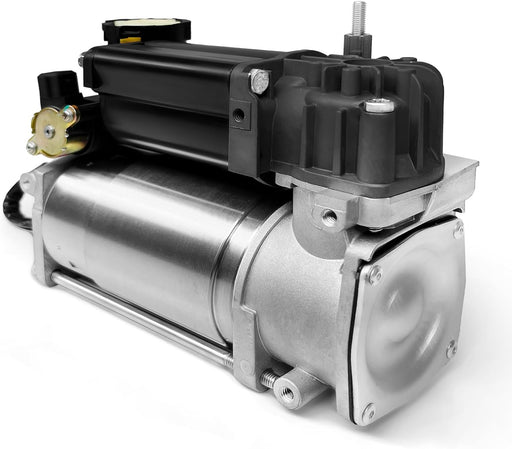 Save 0%
Save %
Save 0%
Save %
VIGOR Air Suspension Compressor Pump Compatible with 1998-2006 BMW X5 E53, 5 Series E39, 7 Series E65/E66 Car, OEM Replace Part Number 37226787616, 37221092349
Vigor Air RideOriginal price $0.00 - Original price $0.00Original price $0.00$227.55$227.55 - $227.55Current price $227.55Compatibility: 1998-2006 BMW X5 E53 2-Corner 2001-2008 BMW 7 Series E65 E66 1996-2003 BMW 5 Series E39 Original Equipment: 37226787616, 3722...
View full detailsOriginal price $0.00 - Original price $0.00Original price $0.00$227.55$227.55 - $227.55Current price $227.55Save 0% Save % -
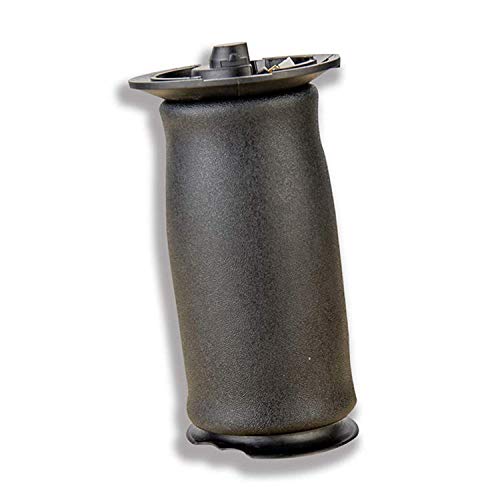
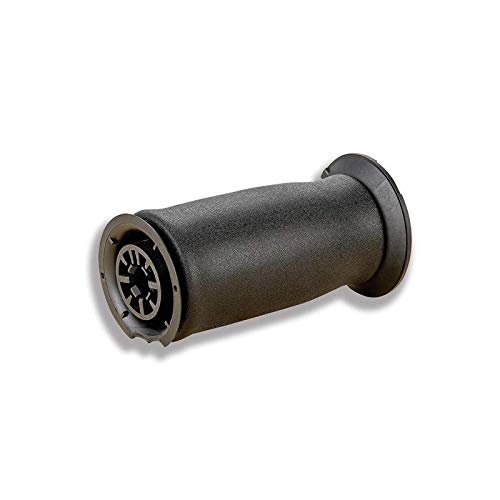 Save 0%
Save %
Save 0%
Save %
BMW E61 5 Series Rear Air Suspension Spring Bag
Vigor Air RideOriginal price $0.00 - Original price $0.00Original price $0.00$170.92$170.92 - $170.92Current price $170.92Compatibility: 2003-2010 BMW 5 Series Series ESTATE (E61) Original Equipment: 37126765602, 37126765603. Vigor Part Number: 1C 3820
Original price $0.00 - Original price $0.00Original price $0.00$170.92$170.92 - $170.92Current price $170.92Save 0% Save % -
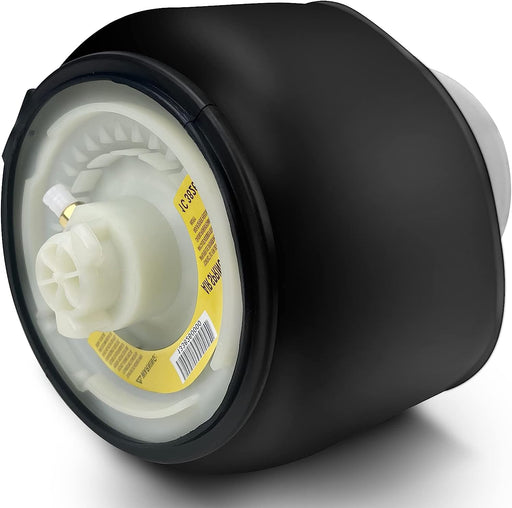
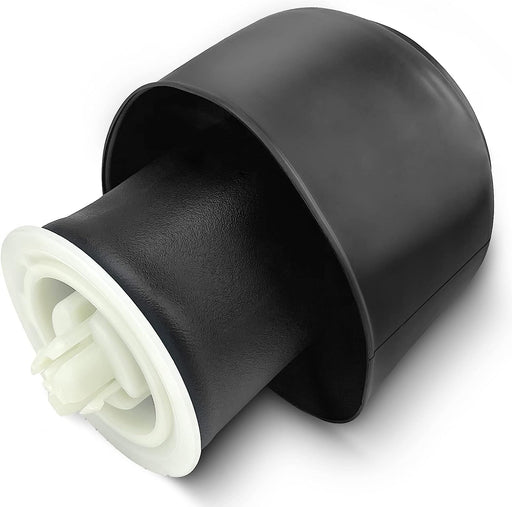 Save 0%
Save %
Save 0%
Save %
Vigor Rear Air Suspension Spring Bag Compatible with BMW 535i, 535i GT, 550i, 550i GT OEM Number 37106781828, 37106781843
Vigor Air RideOriginal price $0.00 - Original price $0.00Original price $0.00$72.15$72.15 - $72.15Current price $72.15Compatibility: 2014-2016 BMW 535i 2010-2017 BMW 535i GT 2014-2016 BMW 550i 2010-2017 BMW 550i GT Original Equipment: 37106781827 37106781828 3...
View full detailsOriginal price $0.00 - Original price $0.00Original price $0.00$72.15$72.15 - $72.15Current price $72.15Save 0% Save % -
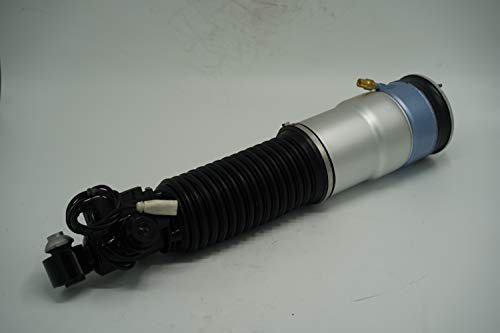
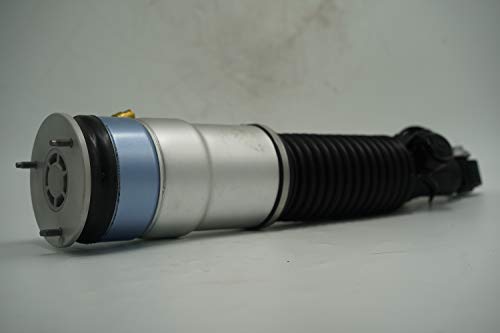 Save 0%
Save %
Save 0%
Save %
BMW F01 F02 F04 730LI 740LI 750LI Rear Left or Right Air Suspension Shock absorber
Vigor Air RideOriginal price $0.00 - Original price $0.00Original price $0.00$244.20$244.20 - $244.20Current price $244.20Compatibility: 2009-2014 BMW 7Series 740Li 2009-2014 BMW 7Series 750Li 2009-2014 BMW 7Series 760Li 2010-2014 BMW 7Series 740Li Original Equi...
View full detailsOriginal price $0.00 - Original price $0.00Original price $0.00$244.20$244.20 - $244.20Current price $244.20Save 0% Save % -
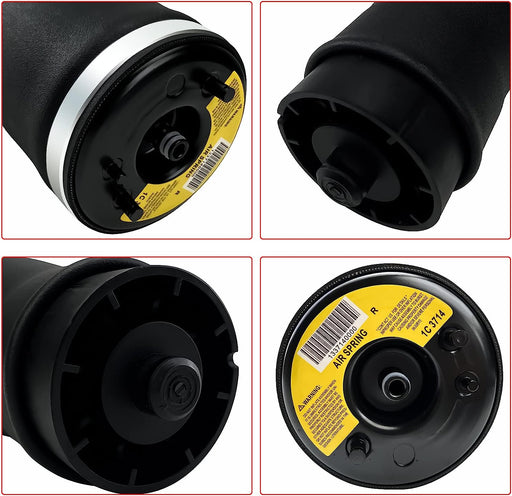
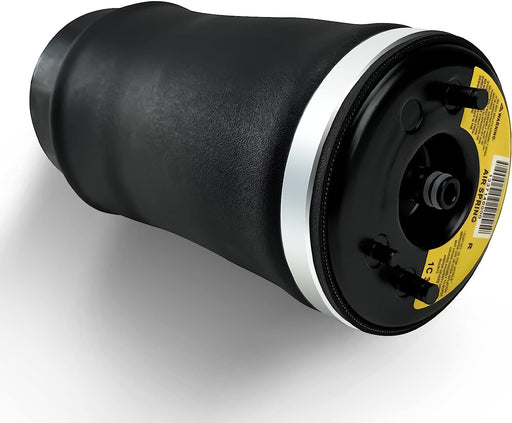 Save 0%
Save %
Save 0%
Save %
Vigor Rear Air Suspension Spring Bag Compatible with BMW X5 E53 2000-2006 Car, OEM Number 37126750356
Vigor Air RideOriginal price $0.00 - Original price $0.00Original price $0.00$109.89$109.89 - $109.89Current price $109.89Compatibility: 2000-2006 BMW X5 (E53) Original Equipment: Left: 37126750355 Right: 37126750356 Vigor Part Number: Left: 1C 3715 Right: 1C ...
View full detailsOriginal price $0.00 - Original price $0.00Original price $0.00$109.89$109.89 - $109.89Current price $109.89Save 0% Save %
BMW Air Suspension: An Overview
BMW's air suspension system represents the sift from traditional suspension to a more advanced, comfortable driving experience. As technology that supports a vehicle's weight with airbags instead of standard springs, it offers an adaptability to road conditions and load changes. This system grants a noticable boost in ride quality and performance.
- BMW X5
- BMW X7
- BMW 5 Series
- BMW 7 Series
- BMW iX
How BMW Air Suspension Systems Work
At the crux of BMW's air suspension are components like the air compressor, air lines, reservoir, and the valve block, all coordinated by an electronic control unit (ECU). This system precisely inflates and deflates airbags (air springs) to maintain optimum vehicle height and ride comfort. It responds to changes in load, road conditions, and driver preferences.
Imagine the system akin to a network of roads where air is the traffic controlled by signals (valves) and directed by the brain (ECU):
reservoir
|
air compressor -- valve block -- air springs
|
ECU (control unit)
Comparing BMW Air Suspension to Traditional Spring Systems
Air suspension provides a dynamic edge over traditional systems, excelling in comfort and adaptability:
- Load leveling: Compensates for heavy cargo to maintain level ride.
- Adaptive height: Lowers or raises vehicle for aerodynamics or clearance.
- Adjustable firmness: Adapts from comfort to sport settings for driving preferences.
Traditional coil spring systems:
- Cost: Less expensive upfront and in maintenance.
- Simplicity: Fewer components that can fail.
- Durability: Tested technology with predictable longevity.
In scenarios like unpredictable terrains of Germany, where one might encounter horrible roads, air suspension adapts real-time, providing seamless comfort, where coil springs might struggle with persistent discomfort.
BMW air suspension thrives in various driving situations:
- On highways at speeds, where aero wheels and optimum vehicle height matter, it reduces drag and furthers efficiency.
- Over speed bumps and regular speed humps, it smoothens the ride, unlike the harsh jolt with coil springs.
- When encountering heavy tongue weight trailers or cargo, it keeps the vehicle level, ensuring safe driving, which traditional springs can't automatically adjust to.
Common Issues and Troubleshooting BMW Air Suspension
Recognizing and promptly resolving issues with BMW air suspension systems is vital to maintain the luxury drive experience and prevent further damage. Timely identification and troubleshooting are cost-efficient and can ensure the longevity of the air suspension components.
- Sudden loss of vehicle height
- Warning lights or messages on the dashboard
- Noisy compressor or running more frequently
- Uneven tire wear due to misalignment
- Vehicle leaning to one side
Recognizing Symptoms of Air Suspension Failure
When a BMW air suspension starts to fail, it doesn't stay silent. You might notice a difference in how your BMW sits when parked — perhaps sitting lower than usual or sagging to one side. During drives, the pomp of smoothness might degrade to a feeling akin to riding on rocks. Variations in height or warnings on your instrument cluster are the car's way of crying out for attention.
- Vehicle sagging or lowered ride height
- Unusual noises from the air compressor
- Harsher ride-feel on normal roads
- Persistent warning lights on the dashboard
- Excessive vehicle bounce after hitting a bump
Diagnostic Tools for BMW Air Suspension Issues
For proper diagnosis, specific tools are crafted to interrogate the ECU, uncovering any fault codes tied to the air suspension woes. These tools range from simple OBD-II scanners to advanced equipment capable of deeper system analysis. Deploying a step-by-step diagnostic routine aids in pinpointing the exact malfunction.
- Connect a compatible OBD-II scanner to the vehicle's diagnostic port.
- Turn on the ignition without starting the engine.
- Initiate the scanner's diagnostic sequence to read fault codes.
- Interpret the codes based on manual or online resources.
- Perform targeted checks based on the diagnostic results.
Vehicle Diagnostics:
[OBD-II Port]
|
[Diagnostic Scanner]
|
[Ignition ON]
|
[Scan for Codes]
|
[Analyze & Troubleshoot]
The Cost of Repairing BMW Air Suspension
Repair expenses for BMW air suspension systems hinge on various factors, including part costs, labor rates, and the model's nuances. While minor leak repairs might only require a humble sum, replacing a compressor or other major components could dwindle your pockets considerably more.
- Basic repairs and leak fixes: $300 - $600
- Air compressor replacement: $1,000 - $1,500
- Complete air suspension overhaul: $2,500 - $4,000
The costs vary by region and dealer but provide a ballpark for budgeting and decision-making purposes.
Air Suspension Management and Electronics
Electronic management systems are the brain behind the brawn in BMW’s air suspension, ensuring that the hardware dances to the tune of cutting-edge technology. This system seamlessly coordinates sensors, ECUs, and actuators, resulting in an adaptable, intelligent suspension setup that responds to driver input and road conditions instantaneously.
- Sensors: Gauge factors like speed, load, and road irregularities.
- Electronic Control Units (ECUs): Process sensor data and make real-time adjustments.
- Actuators: Implement changes made by ECUs in the suspension components.
Understanding the BMW Air Suspension Control System
The control system for BMW's air suspension is an intricate network—sensors provide real-time data to the ECU, which in turn directs the actuators to modify air pressure in the suspension bags. This partnership ensures your BMW maintains composure over bumps and poise in the corners.
Adjusting Your BMW’s Air Suspension Settings
Customization in the BMW's air suspension settings allows drivers to tweak the system for either improved comfort, reduced height for parking, or elevated clearances for rough terrain with ease. These adjustments can be made through the onboard interface, providing real-time adaptation to the driving experience.
- Start your BMW and access the onboard interface.
- Navigate to the 'Chassis and Suspension' menu.
- Select the desired suspension setting (e.g., comfort, sport, raised).
- Validate the selection and allow the system to adjust, signalled by a change in ride height or suspension feel.
- Test the setting under different conditions to evaluate performance.
Maintaining Your BMW Air Suspension System
Regular maintenance is a key to sustaining the functionality and sophistication of BMW air suspension systems. Like any high-fidelity system, it requires periodic attention to ensure performance doesn't degrade. Maintenance is not just a matter of remediation but one of prevention, ensuring that your ride remains as impeccable as the day it rolled off the lot.
- Perform visual inspections for leaks or damage annually
- Check system diagnostics with a compatible scanner quarterly
- Replace air filters and dryers every 40,000 to 60,000 miles
- Service compressor and examine valves at 60,000-mile intervals
Regular Maintenance Schedules for Peak Performance
Routine and comprehensive service are pillars of a robust maintenance schedule for BMW air suspension systems. Neglect can lead to compromised ride quality and potential system failure, but adherence to the recommended timeline can preserve the vehicle's immersive comfort.
- Every 10,000 miles: Scan for fault codes and check for early signs of wear.
- Every 20,000 miles: Detailed inspection of air suspension components.
- Every 40,000 miles: Replace wearable parts like air filters and dryers.
- Every 60,000 miles: Comprehensive service including compressor check and valve maintenance.
FAQs
Q: What is the lifespan of BMW air suspension systems?
A: BMW air suspension systems typically last between 60,000 to 100,000 miles, depending on driving habits, road conditions, and maintenance diligence.
- Factors Influencing Longevity: driving frequency, road harshness, load weight
- Signs of Wear: leaks, uneven stance, abnormal noises
- Maintenance Practices: regular inspections, prompt repairs, avoiding overloading
Q: Can I upgrade the air suspension on any BMW model?
A: Most BMW models, particularly luxury and SUV lines, can be upgraded with aftermarket air suspension kits. However, compatibility varies depending on the model and year.
- Check kit compatibility with specific model/year
- Be aware of potential warranty implications
- Consult with a specialist for models with non-standard setups
Q: How does BMW air suspension affect fuel efficiency?
A: Air suspension can positively impact fuel efficiency by maintaining optimal aerodynamics and reducing drag at higher speeds. Data shows, adjustable ride heights from air suspension can lead to fuel savings, particularly on highways.
- Aerodynamic efficiency at high speeds, adaptability for varying loads, reasonable savings over long distances

























































